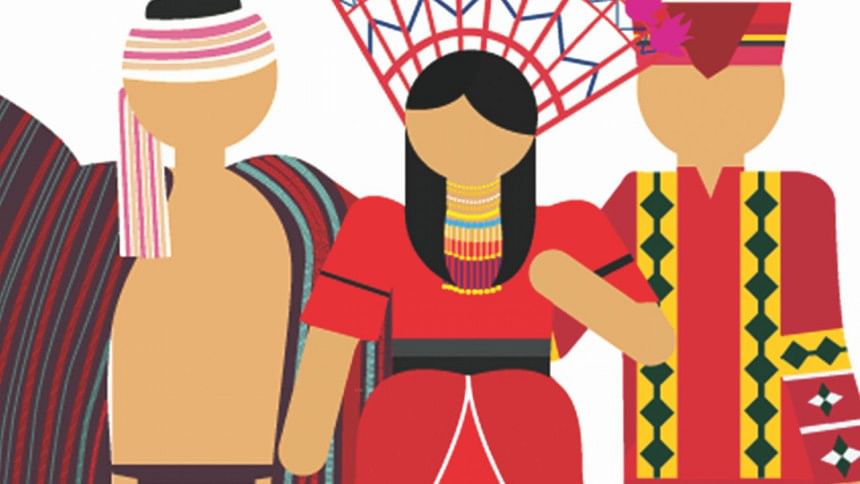The rights of indigenous people and sustainable development

In 1994, the United Nations General Assembly established the International Day of the World's Indigenous Peoples to be observed on August 9 every year. The day pays tribute to over 370 million indigenous peoples in the world. It celebrates the rich cultural diversity of indigenous communities, and recognises their contributions to the world. It also allows us an opportunity to reflect and recognise the struggle of indigenous peoples for their rights. This observance serves as a reminder to governments and the international community of their commitments to advance the rights, and safeguard the identities of indigenous peoples. Every year, the day draws the world's attention to an issue of concern for indigenous peoples, and this year the spotlight is on indigenous peoples' right to education.
Globally, indigenous peoples speak an overwhelming majority of the world's 7,000 languages, and represent over 5,000 different cultures. While they make up less than 5 percent of the global population, they are estimated to be 15 percent of the poorest of the world. In many parts of the world, indigenous peoples have become marginalised and their rights undermined. These communities still struggle to ensure that their culture, traditions, customs, language and existence are recognised, respected and treasured by their governments and their fellow citizens.
Education attainments among indigenous communities are generally much lower than national averages. This is largely due to their limited accessibility to education institutions, language barriers, inadequate resources, prejudicial attitude of peers and teachers, and the overall stigma attached to ethnic minorities.
Last year, world leaders adopted the 2030 Agenda for Sustainable Development and 17 Sustainable Development Goals (SDGs). The 2030 Agenda gives an opportunity to ensure that inclusive development applies to all citizens, including indigenous communities. The core of these 17 SDGs is to "Leave No One Behind", which is of special relevance to indigenous peoples. Several of the SDGs are directed to indigenous peoples, including Goal 4 that calls for equal access to education for indigenous children. Similarly, other indicators of SDGs aim to measure specific aspects of indigenous peoples' lives, such as income from small-scale food production and collective land rights. The Government of Bangladesh has taken on itself to lead the implementation of the SDG agenda in the country. It has made commitments to achieve the 2030 Agenda, and its National Development Plan - the 7th Five Year Plan, is intended to be at the forefront of efforts to achieving the SDGs.
Bangladesh is home to over 1.5 million indigenous and tribal peoples, representing 1.8 percent of the total population of the country. Positive changes are visible in the government's efforts to ensure that their rights are upheld, evident in the new 7th Five Year Plan.
The Government of Bangladesh has demonstrated its commitment to improving education-related development milestones for its indigenous and tribal communities. It has acted positively to publish pre-primary textbooks in six ethnic languages to promote inclusive education for ethnic minority children in Bangladesh from the next academic year, a positive step towards protecting and respecting their culture, language, heritage, knowledge and existence. It is also a step forward in the education sector as the 7th Five Year Plan identified that only 7.8 percent of all Chittagong Hill Tracts people complete primary education, and only 2.4 percent complete secondary education.
The 7th Five Year Plan refers to the 1997 Chittagong Hill Tracts Accord and the need for stronger attention to expanding services in education, health and social protection. It also acknowledges that land dispute issues remain so far unresolved. The Plan promotes active engagement in addressing the specific challenges of poverty amongst the indigenous and tribal communities, and identifies several other key concerns, including language and education rights.
In May this year, the Permanent Forum on Indigenous Peoples held in the United Nations Headquarters in New York, emphasised the importance of increasing education opportunities for indigenous peoples. Access to education will increase their ability to skillfully manage their resources, health, agriculture and food consumption.
From this context, the United Nations' agencies, funds and programmes will continue to work closely with the Government of Bangladesh to ensure that indigenous and tribal communities can make their full contribution toward the country's achievement of the Sustainable Development Goals.
The writer is UN Resident Coordinator in Bangladesh.

 For all latest news, follow The Daily Star's Google News channel.
For all latest news, follow The Daily Star's Google News channel. 



Comments